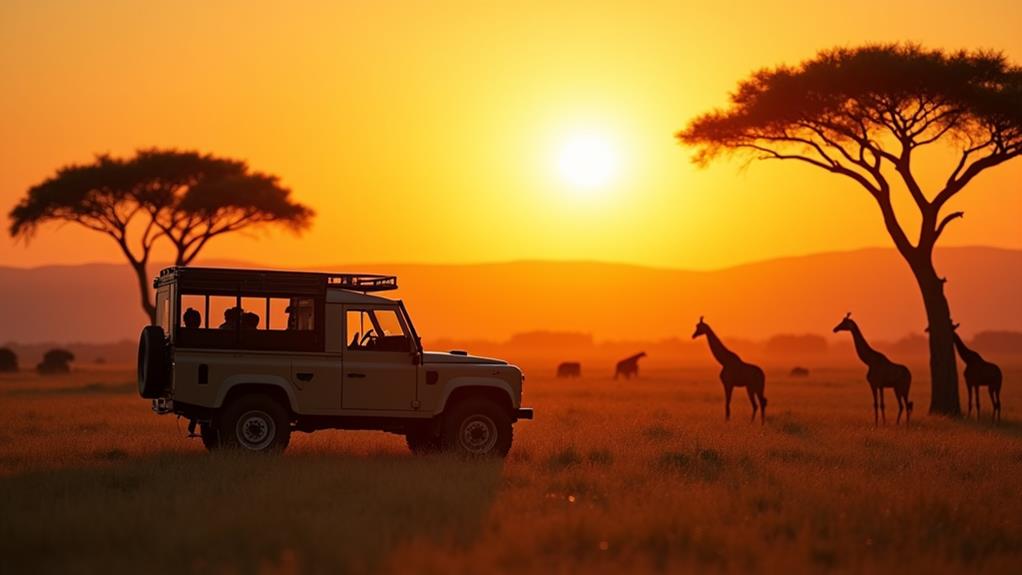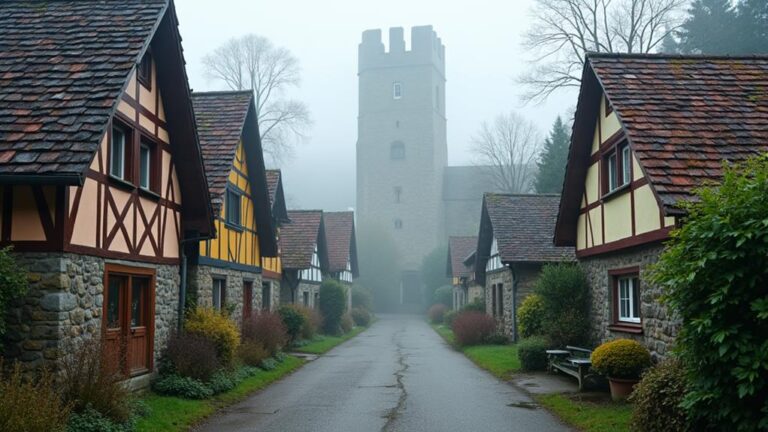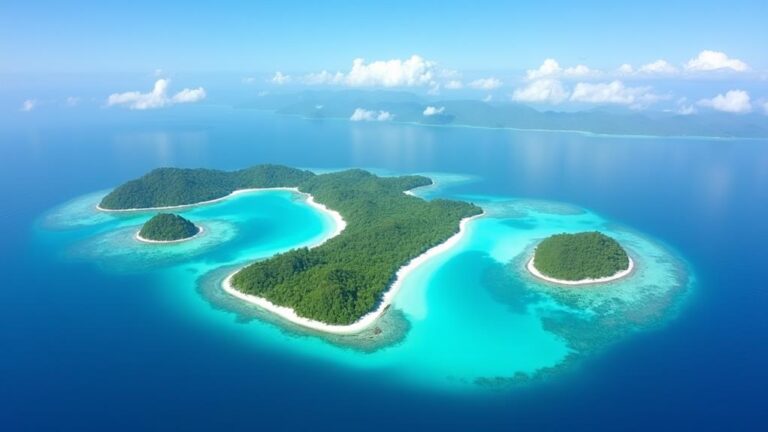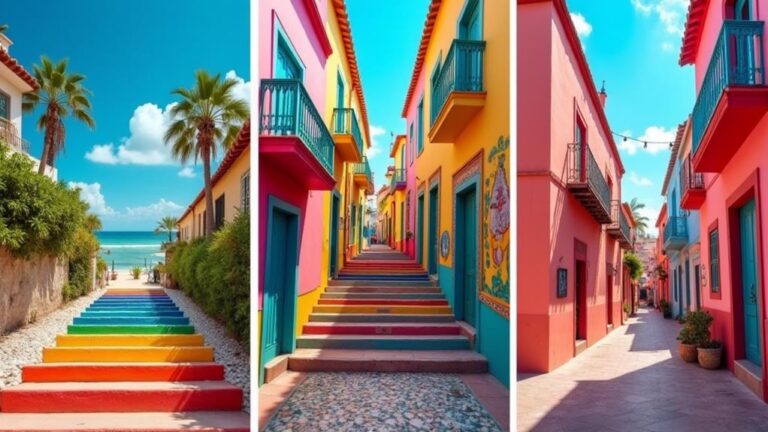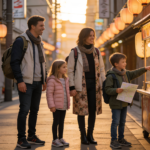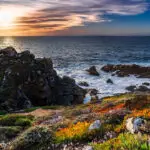Imagine witnessing the iconic wildebeest migration in Kenya's Maasai Mara National Reserve, where over a million animals make their way across the savannah in search of greener pastures. You're likely planning your African safari around this spectacle, but it's essential to consider the broader context of Kenya's climate and wildlife patterns. The country's varying seasons offer distinct advantages and disadvantages for wildlife viewing, photography, and overall safari experience. As you weigh your options, you'll need to balance factors like animal activity, scenic landscapes, and tourist crowds – so, what's the best approach for your ideal safari?
Contents
Key Takeaways
- The best time for an African safari in Kenya is during the dry season, from June to October.
- Witness the Great Migration in Maasai Mara from July to October, with peak season in August and September.
- Regional climate variations in Kenya affect the best time to visit, with cooler highlands and hotter coastal areas.
- Dry season advantages include easier animal spotting and better photography opportunities due to scarce water sources.
- Shoulder and low season benefits include a more relaxed and affordable safari experience with fewer crowds and discounts.
Best Time for Wildlife Viewing
When planning an African safari in Kenya, the wildlife viewing season is a crucial factor to consider.
The best time for wildlife viewing largely depends on the movement and concentration of animals within their habitats. Kenya's diverse ecosystems support an array of wildlife, with predator-prey dynamics at play throughout the year.
During the dry season, from June to October, animals congregate around water sources, making them easier to spot.
This period is ideal for witnessing predator-prey interactions, as predators like lions and leopards prey on vulnerable animals. The dry season also brings better visibility, as vegetation is less dense.
In contrast, the wet season, from November to May, brings lush vegetation and abundant water sources, dispersing animals across their habitats.
While the wet season can make wildlife viewing more challenging, it's a great time to see newborn animals and migratory species.
Understanding the dynamics of animal habitats and predator-prey relationships will help you make the most of your African safari in Kenya, regardless of the time of year you visit.
Kenya's Climate and Weather Patterns
As you plan your African safari in Kenya, it's essential to understand the country's climate and weather patterns, which can significantly impact your travel experience.
Kenya has a diverse climate, ranging from tropical to arid, with humid temperatures in the coastal regions and cooler temperatures in the highlands.
Rainfall patterns vary across the country, with the long rains typically occurring from March to May and the short rains from October to December.
Understanding Kenya's climate and weather patterns can help you prepare for your safari adventure.
- Regional climate variations: Kenya's climate varies significantly depending on the region, with the coastal areas generally hotter and more humid than the highlands.
- Rainfall patterns: The country experiences two rainy seasons, with the long rains typically occurring from March to May and the short rains from October to December.
- Highland climate: The highlands, including areas like Nairobi and the Aberdare Mountains, have a cooler climate, with average temperatures ranging from 10°C to 20°C (50°F to 68°F).
- Coastal climate: The coastal regions, including Mombasa and the coast of Indian Ocean, have a tropical climate, with high temperatures and humid conditions year-round.
Migration Season in Maasai Mara
If you're planning a safari in Maasai Mara, you're likely timing your visit around the Great Migration.
The best time to witness this spectacle is from July to October, when wildebeests, zebras, and other animals migrate in search of greener pastures.
To maximize your chances of witnessing the migration, focus on visiting the Mara River, Keekorok, and Sekenani areas, as these are known hotspots for wildlife activity.
When to Visit
Visiting Kenya's Maasai Mara during the Great Migration season is one of the most spectacular experiences you'll have on an African safari.
The Great Migration typically takes place between July and October, with the peak season being August and September. If you're planning a safari during this time, be prepared for the crowds and higher prices.
When planning your safari, it's essential to consider the travel restrictions in place.
Some areas of the Maasai Mara may be closed due to high water levels or other safety concerns. Make sure to check with your tour operator or park authorities for any updates before your trip.
- Safari planning: Book your safari well in advance to avoid high-season prices and ensure availability.
- Travel restrictions: Check with park authorities for any travel restrictions or area closures before your trip.
- Crowd management: Consider visiting during the shoulder season (July or October) for smaller crowds and lower prices.
- Weather conditions: Be prepared for unpredictable weather, including rain and high temperatures.
Best Migration Spots
The Maasai Mara's vast plains and abundant wildlife make it the perfect setting for witnessing the Great Migration.
When planning your safari, it's essential to know the best migration spots to maximize your chances of witnessing this incredible spectacle.
The Maasai Mara's migration routes are predictable, with the wildebeest and zebras following a circular pattern in search of greener pastures.
You'll want to focus on the Mara River, which serves as a major crossing point for the migrating herds.
The river's banks offer breathtaking views of the surrounding landscape, and you'll have a front-row seat to witness the drama of the migration.
Other key spots include the Oloololo Escarpment, the Mara Triangle, and the Sekenani Gate.
These areas offer prime viewing opportunities, with the escarpment providing a stunning backdrop to the migration.
When planning your safari, consider visiting during the peak migration season, usually between July and October.
This ensures you'll witness the migration in full swing, with the herds crossing the Mara River and roaming the Mara's vast plains.
Dry Season Safari Advantages
Embracing the dry season in Kenya's savannas, you're in for an unparalleled safari experience.
Although dry landscapes may seem barren, they offer unique advantages for spotting wildlife.
During this time, water sources become scarce, forcing animals to congregate around the remaining waterholes. This concentration of wildlife makes it easier for you to spot a variety of species in a shorter amount of time.
Some of the advantages of a dry season safari include:
- Easier animal spotting: With fewer water sources, animals are more concentrated, making them easier to find and observe.
- Less vegetation: The dry landscapes provide a clearer view of the animals, as there's less vegetation to obstruct your view.
- Increased animal activity: The dry season forces animals to be more active during the day in search of food and water, giving you more opportunities to observe them.
- Better photography opportunities: The dry landscapes and clear skies provide ideal conditions for capturing stunning photographs of the wildlife.
Green Season Safari Benefits
What does the green season in Kenya's savannas have in store for safari enthusiasts?
If you're planning a trip during this time, you'll find several benefits that make it an attractive option. For one, the green season, which typically falls between March and May and November to December, offers a more serene and peaceful experience.
With fewer tourists, you'll have a more intimate and immersive experience with the wildlife and landscapes.
Budget travelers will appreciate the lower prices for accommodations and tour packages during the green season.
Many lodges and tour operators offer discounts and promotions to attract visitors during this time. Additionally, the lush vegetation creates a beautiful backdrop for photography opportunities.
The vibrant colors of the green season, combined with the vibrant hues of the wildflowers, make for stunning images.
The green season also offers a unique perspective on the wildlife.
Many animals give birth during this time, providing opportunities to see newborns and their mothers.
The scenery is also more dramatic, with the greenery creating a sense of depth and texture.
Avoiding Peak Tourist Season
If you're planning an African safari in Kenya, consider avoiding peak tourist season to make the most of your trip.
By traveling during the shoulder or low season, you'll experience fewer crowds and lower prices, making for a more relaxed and affordable safari experience.
Shoulder and low seasons also offer unique benefits, such as more intimate wildlife encounters and access to exclusive deals on accommodations and tours.
Shoulder Season Benefits
Slipping into Kenya's shoulder season can be a game-changer for your African safari experience.
You'll avoid the crowds and chaos associated with peak tourist season, making for a more intimate and immersive wildlife experience. Off-peak travel also means you'll be more likely to snag budget-friendly deals on accommodations and tours.
- Lower prices: Expect discounts on everything from safari lodges to guided tours.
- Fewer tourists: You'll have a more peaceful and serene experience, with fewer people competing for views and photo ops.
- Increased animal sightings: With fewer tourists, you'll have a better chance of spotting wildlife in their natural habitats.
- More personalized service: With fewer guests, your guides and lodge staff will be able to provide more personalized attention and service.
Low Season Advantages
Traveling to Kenya during the low season, typically from April to June and November to December, can offer a unique set of advantages for your African safari experience.
If you're a budget traveler, you'll appreciate the lower prices for accommodations, tour packages, and flights. Many lodges and camps offer discounts and promotions to attract visitors during this time, making a safari more affordable.
As a solo explorer, you'll have a more intimate experience with nature and the wildlife.
With fewer tourists, you'll have a better chance of spotting animals without the crowds. Additionally, guides and drivers may be more flexible with their itineraries, allowing you to spend more time in areas that interest you.
However, keep in mind that some lodges and camps may close or operate on reduced schedules during the low season. It's essential to research and plan ahead to ensure that your preferred accommodations and activities are available.
Despite the potential drawbacks, the low season offers an authentic and peaceful safari experience that can be just as rewarding as visiting during peak season.
Regional Variations and Exceptions
Kenya's diverse regions offer you a unique safari experience.
Regional climates and coastal influences significantly impact the best time to visit each area. As you plan your African safari in Kenya, consider the variations in climate and geography that affect the wildlife and vegetation.
Regional climates play a crucial role in determining the best time for a safari in Kenya.
The coastal region, including Mombasa and the surrounding national parks, has a tropical climate with high temperatures and humidity year-round.
The best time to visit this region is during the dry season, from June to October.
Areas like Mount Kenya and the Aberdare Mountains have a cooler climate with lower temperatures and higher rainfall.
These regions are best visited during the dry season, from June to October.
The northern desert regions, including Lake Turkana and Samburu, are hot and dry year-round.
The best time to visit these regions is during the cooler months, from November to March.
Western Kenya, including the Maasai Mara and Lake Victoria, has a mild climate with two rainy seasons.
The best time to visit this region is during the dry season, from June to October and December to March.
- Coastal influence
- Mountainous regions
- Desert regions
- Western regions
Conclusion
As you plan your Kenyan safari, remember that timing is everything. The dry season's golden light and the green season's lush landscapes paint two different pictures of the same canvas. Weigh your priorities – easier animal spotting or a serene experience – and choose the season that suits you best. By doing so, you'll be able to weave a rich tapestry of unforgettable memories from your African safari adventure.

